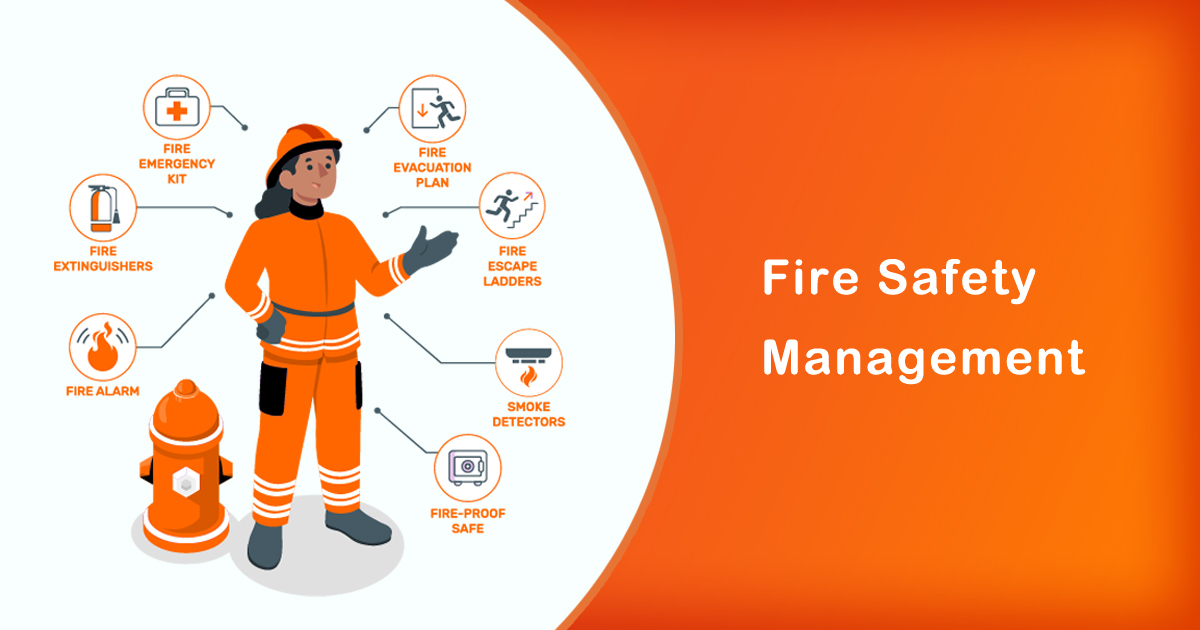Introduction
Fire safety management is the process of implementing measures to reduce the risk of fires and ensure the safety of people and property in case of a fire. It is an essential aspect of any building or facility, as it helps to prevent fire incidents and minimize the impact of fire emergencies. In this article, we will explore what fire safety management is, its importance, and some effective fire safety management strategies.
Fire Safety Management – What is it?
Fire safety management is a systematic approach to preventing fires and managing fire risks. It involves identifying potential fire hazards, assessing the risks, and implementing measures to prevent fires from occurring or reduce the impact of a fire emergency. Fire safety management aims to ensure that buildings and facilities are designed, constructed, and maintained in a way that minimizes the risk of fire incidents and that people are trained to respond appropriately in case of a fire emergency.
The Importance of Fire Safety Management
Fire safety management is crucial because fires can cause significant damage to property and can result in injuries or loss of life. According to the National Fire Protection Association, in 2019, there were approximately 1.3 million fires in the United States, resulting in 3,704 civilian fire deaths and 16,600 civilian fire injuries. The economic impact of fires can also be substantial, with estimated losses of $14.8 billion in 2019 alone.
Effective Fire Safety Management Strategies
There are several effective fire safety management strategies that can help prevent fires and minimize their impact. These include:
1. Fire Risk Assessment
The first step in fire safety management is to conduct a fire risk assessment of the building or facility. This assessment involves identifying potential fire hazards, such as electrical equipment, flammable materials, or smoking areas, and evaluating the risks associated with each hazard. Based on the assessment, fire safety measures can be implemented to reduce the risk of a fire starting or spreading.
2. Fire Prevention Measures
Fire prevention measures can include a range of strategies, such as installing fire alarms, sprinkler systems, and fire doors, and ensuring that electrical equipment is well-maintained and not overloaded. Additionally, staff training can help to prevent fires by ensuring that employees are aware of the risks and know how to identify and report potential hazards.
3. Emergency Response Planning
In addition to fire prevention measures, it is important to have an emergency response plan in place in case of a fire. This plan should include procedures for evacuating the building or facility, identifying emergency exits, and ensuring that all staff are trained in fire safety and emergency procedures. Regular fire drills can also help to ensure that employees know what to do in case of a fire.
4. Maintenance and Inspection
Regular maintenance and inspection of fire safety systems and equipment are essential to ensure that they are functioning correctly and to identify any potential issues before they become a problem. This can include regular testing of fire alarms and sprinkler systems, checking electrical equipment for faults, and ensuring that fire doors are kept closed and in good condition.
Conclusion
Fire safety management is an essential aspect of any building or facility, and implementing effective fire safety measures can help to prevent fires and minimize their impact. By conducting a fire risk assessment, implementing fire prevention measures, developing an emergency response plan, and regularly maintaining and inspecting fire safety systems and equipment, buildings and facilities can be made safer for occupants and less vulnerable to fire incidents. By following these fire safety management strategies, we can create a safer environment for everyone.








